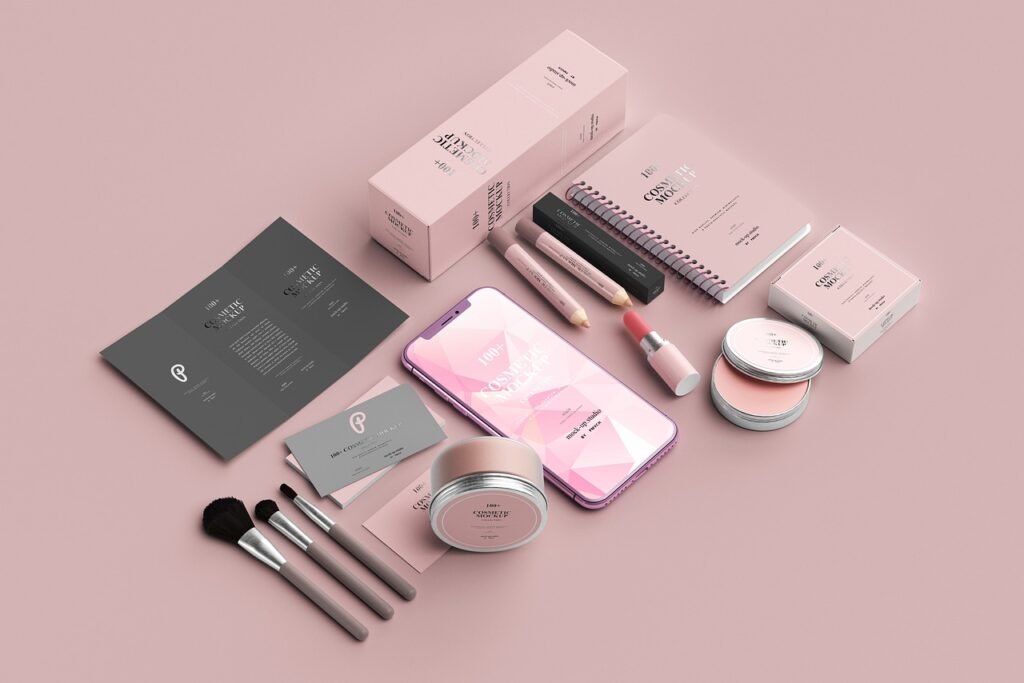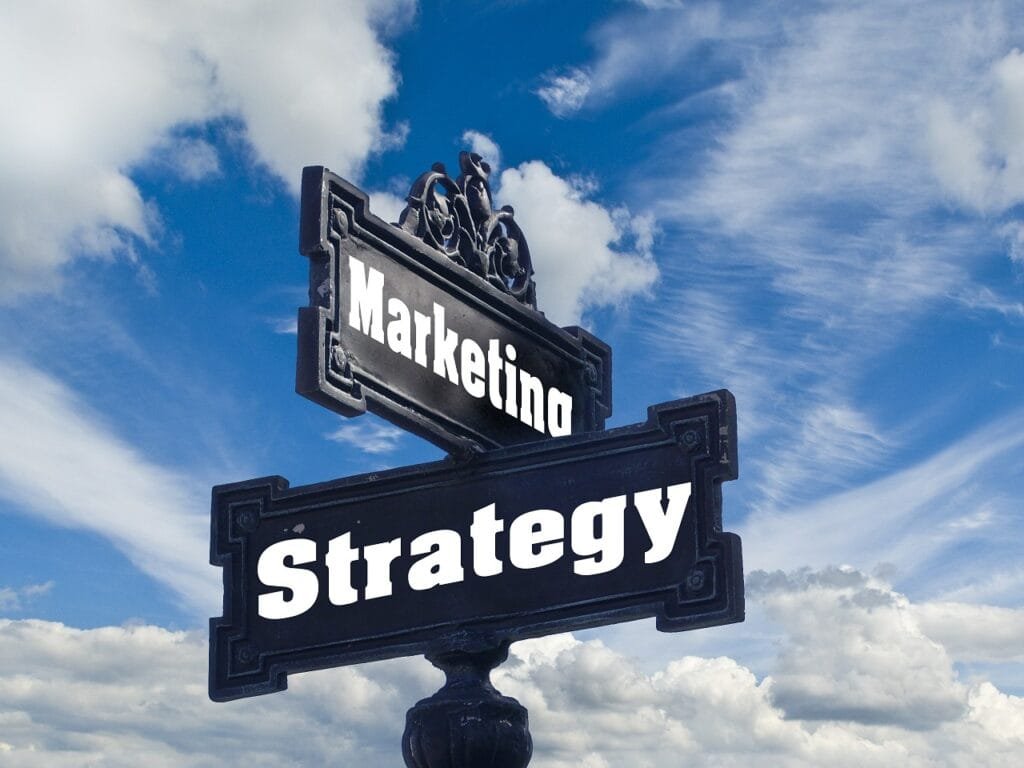This Article has been revised, edited and added to, by Poulomi Chakraborty.
The world of beauty is glamorous, colorful, and ever-evolving. With a multitude of brands vying for consumer attention, what makes some cosmetic brands stand out and thrive while others fade away? This in-depth exploration delves into the secrets behind successful beauty branding, unearthing strategies, stories, and insights that have propelled brands to iconic status.
Understanding the Beauty Consumer

Before diving into branding strategies, it’s crucial to understand the ever-evolving beauty consumer. They’re more than just a purchaser; they’re an informed, connected, and empowered individual.
Identifying Your Target Audience
When embarking on the journey of building a beauty brand, the first critical step is to thoroughly understand who your beauty consumers are. This isn’t just about demographics like age or gender, but delving deeper into psychographics—understanding their lifestyles, values, and beauty routines.
For instance, if your brand is committed to sustainability, your target audience might not just be people who buy organic products, but those who actively advocate for environmental issues in their community.
Leveraging Consumer Insights
Gaining insights into consumer behavior is pivotal. This means not only tracking what they buy but also understanding why they prefer certain products. For example, if you notice a trend towards skin care products over makeup, it could indicate a shift towards valuing skin health and natural beauty, possibly driven by the global wellness trend.
To gather these insights, consider implementing tools like customer surveys, feedback forms on your website, or even engaging directly on social media platforms. Analyzing this data will help you tailor your marketing strategies and product development to meet the actual needs and desires of your consumers.
Building a Community
In today’s digital age, successful beauty brands thrive on building communities, not just customer bases. Engage with your audience through consistent and authentic content that resonates with their values and interests.
For instance, if your brand uses cruelty-free ingredients, share behind-the-scenes content about how you source these ingredients or stories about people who are impacted by your ethical practices.
Moreover, consider collaborations with influencers who genuinely care about your brand’s mission. They can help amplify your message and connect with potential customers on a more personal level, creating a loyal community around your brand.
Offering Personalized Experiences
Personalization is a powerful tool in the beauty industry. With technology, it’s possible to offer personalized product recommendations based on skin type, color preferences, or beauty goals, which can greatly enhance the customer experience. Tools like online quizzes or AR technology that allows customers to ‘try on’ makeup virtually can make shopping both fun and personalized.
Staying Agile and Innovative
The beauty industry is fast-evolving, driven by trends and consumer demands. It’s crucial for startups to remain agile, adapting quickly to these changes. This could mean pivoting your product lines based on what’s trending, like increasing your range of skincare products if that’s where the demand shifts, or being among the first to utilize emerging ingredients or technology.
Innovation also extends to your marketing strategies. Use analytics to track what type of content performs best or which products get the most attention, and use this information to adjust your campaigns. Always be testing new ideas, whether it’s a seasonal promotion or a brand-new product launch strategy.
Crafting a Brand that Speaks
Last but not least, how your brand communicates is key to attracting and retaining consumers. This goes beyond visual branding like logos and color schemes. Develop a voice that speaks directly to your target audience’s aspirations and challenges.
For example, if your consumers are primarily millennials, your brand’s tone might be more playful and upbeat, while a brand focused on luxury anti-aging products might adopt a more sophisticated, knowledgeable tone.
Effective storytelling can position your brand not just as a product provider but as a key part of your consumers’ lifestyle. Share customer testimonials, before-and-after stories, and detailed blog posts that help educate your audience about your products and the specific problems they solve.
By implementing these strategies, beauty brand founders can not only understand their consumers better but also build a brand that resonates deeply, encourages loyalty, and drives growth.
Remember, in the beauty industry, it’s not just about selling a product; it’s about selling a lifestyle and an experience that aligns with the values and desires of your consumers.
Storytelling: Crafting a Compelling Brand Narrative

Every successful beauty brand has a story—a narrative that resonates, inspires, and connects.
Embracing Authenticity in Your Story
The heart of any effective brand narrative in the beauty industry is authenticity. Your brand’s story should be a genuine reflection of what you stand for and what you offer that’s different from everyone else. For instance, if your brand was born from a personal need for hypoallergenic makeup, share that journey.
Talk about the struggles and triumphs of developing your products. This not only humanizes your brand but also creates an emotional connection with consumers who share similar struggles.
Making Emotional Connections
Emotions drive purchases far more than most entrepreneurs realize, especially in the beauty sector. When crafting your narrative, think about how you want your customers to feel when they see your brand.
Should they feel empowered? Reassured? Excited? For example, a brand that promotes body positivity might share customer stories and images that celebrate diverse body types, thereby evoking feelings of inclusion and confidence among its audience.
Utilizing Multiple Platforms for Your Narrative
A compelling brand narrative should be omnipresent yet tailored to the platform it’s on. Instagram, with its visual nature, is perfect for before-and-after photos, behind-the-scenes videos, and storytelling through images.
Meanwhile, platforms like Twitter are great for engaging directly with consumers, sharing quick updates, and even handling customer service inquiries in a tone that matches your brand’s personality.
Additionally, don’t overlook the power of traditional storytelling through blog posts and articles on your website. Here you can delve deeper into the stories behind your products, share detailed customer success stories, or even discuss the science behind your beauty formulations.
Integrating Customer Voices
Incorporate your customers into your brand story. When customers share their own experiences and results, it not only adds credibility but also enriches the narrative. Encourage your customers to share their stories on their social media platforms, and repost these experiences with their permission.
This not only shows that you value their input but also helps prospective customers see real-life testimonials of your products in action.
Consistency is Key
While your messages can adapt to different platforms, the core elements of your narrative should remain consistent. Whether a customer reads about your brand on a blog, sees a post on Instagram, or watches a video on YouTube, they should be able to immediately recognize that it’s your brand. This consistency builds familiarity and trust, which are crucial for brand loyalty.
Innovate with Interactive Storytelling
Interactive storytelling is another powerful way to engage consumers. Use technologies like augmented reality or interactive web experiences where customers can participate in the story themselves.
For example, an AR app that lets customers see how makeup products would look on their face can be a part of the narrative about personalization and innovation.
Measuring the Impact of Your Story
Finally, it’s essential to track how well your brand narrative is resonating with your audience. Use tools like social media analytics and website traffic statistics to see what kinds of stories are hitting the mark.
Are people spending more time on pages with customer stories? Do posts about your brand’s origin get more engagement? Adjust your strategy based on these insights to continuously refine and improve your narrative.
A compelling brand narrative isn’t just about telling your audience who you are; it’s about showing them why they should care. By weaving authenticity, emotional connections, and interactive elements into your storytelling, you can create a powerful narrative that not only tells but also sells.
Visual Identity: More than Just a Pretty Package

In the beauty industry, where the promise is often about enhancing visual appeal, the visual identity of a brand plays a pivotal role. It’s not merely about aesthetics; it’s about conveying brand values, setting industry trends, and creating memorable touchpoints.
Creating a Cohesive Visual Identity
A strong visual identity does more than catch the eye—it communicates the essence of your brand at a glance. This identity spans your logo, packaging, website design, and even your social media aesthetics. The key here is cohesion.
Every visual element should reflect a consistent theme and color palette that aligns with your brand’s values and appeals to your target audience. For example, a luxury skincare brand might opt for clean lines and a monochromatic color scheme to convey elegance and simplicity.
Understanding Color Psychology
Colors are not just decoration—they convey emotions and messages. Understanding color psychology can significantly enhance your brand’s ability to communicate its core message. For instance, green often represents nature and might be a perfect fit for a brand focused on natural ingredients.
Blue can evoke feelings of calm and reliability, making it ideal for a brand that prides itself on sensitive skin formulations. Choosing the right colors can help you connect emotionally with your consumers before they even read a word on the package.
Typography That Speaks
The fonts you choose for your brand are as crucial as your color palette. Typography can influence how your message is perceived. A font like Serif might convey tradition and reliability, suitable for a brand with a long-standing heritage in beauty care.
In contrast, a modern Sans-serif can project a clean, sleek feel, aligned with innovative, cutting-edge beauty technologies. Ensure that your chosen typography is legible across all platforms, from large storefront signs to mobile screens.
Packaging That Tells a Story
Your product’s packaging is often the first physical interaction consumers have with your brand, making it a powerful tool to make a strong first impression. Innovative packaging that tells your brand’s story can set you apart. If sustainability is a core value, using recycled materials and minimalistic designs can speak volumes.
Also, consider how your packaging functions—easy-to-use, resealable, and portable designs can enhance user experience and reinforce your brand’s thoughtfulness.
Visual Content That Engages
In the digital age, visual content extends beyond static images. Videos, GIFs, and interactive graphics can engage your audience much more dynamically. Use these tools to show your products in action, provide tutorials, or share behind-the-scenes glimpses of your production process. This not only enriches your visual identity but also boosts engagement and helps your brand stay relevant and interesting.
Consistent Imagery Across All Channels
Make sure that your visual identity is consistent across all channels. Whether it’s your online store, Instagram, newsletters, or promotional materials, each piece should unmistakably belong to your brand. This consistency helps build a strong, recognizable brand that consumers feel comfortable with over time.
Evolving Without Losing Your Identity
As your brand grows and evolves, so might your visual identity. However, it’s crucial to maintain some elements of consistency so that your customers don’t feel lost with the changes. Make gradual adjustments rather than drastic redesigns, and always keep your core brand values in sight. This evolution can keep your brand fresh and interesting, while also maintaining the loyalty of your existing customer base.
By focusing on these elements, your visual identity does more than just look good—it becomes a strategic tool that communicates the essence of your brand, attracts the right audience, and builds lasting connections. In the competitive world of beauty branding, those connections are invaluable.

Related: Check out our free SEO suite

Digital Presence: Engaging the Online Beauty Enthusiast
In today’s digital age, a brand’s online presence is as significant, if not more, as its physical presence.
Crafting an Engaging Online Experience
In the digital age, your brand’s online presence is often the first point of contact with potential customers. To capture and hold their attention, your website and social media platforms must not only look good but also offer a seamless, engaging user experience.
Consider the user journey from the moment they land on your page to the moment they make a purchase. Every step should be intuitive and reflective of the brand’s ethos. For example, if your brand promises a luxury experience, your website’s interface should match that promise with elegant design and high-quality imagery.
Leveraging Social Media Effectively
Social media is more than just a platform for promotion—it’s a space for conversation. Engage actively with your followers by responding to comments, sharing user-generated content, and participating in relevant conversations.
This not only boosts your visibility but also helps build a community around your brand. Platforms like Instagram and Pinterest are particularly valuable in the beauty industry for their visual focus, while Twitter can be great for quick interactions and customer service.
Utilizing SEO to Your Advantage
Search Engine Optimization (SEO) is crucial for making sure your brand gets found online. Use relevant keywords not just in your ads but throughout your website—product descriptions, blog posts, and even images.
Understanding what potential customers are searching for can help you tailor your content to meet those needs. For instance, if there’s a rising trend in organic skincare, ensure that your content reflects these terms, helping draw in an audience already interested in this niche.
Content That Educates and Inspires
Content is king in the digital world, and in the beauty industry, it’s your best tool for engagement. Create content that educates your audience about your products, such as how-to guides, tutorials, and ingredient benefits.
This not only positions your brand as an authority in the beauty space but also helps customers make informed decisions, thereby increasing their trust in your brand.
Interactive and Personalized Digital Campaigns
Interactive campaigns can significantly increase engagement rates. Consider launching quizzes that help users determine the best products for their skin type or makeup preferences. Personalized email campaigns based on past purchases or browsing behavior can make customers feel understood and valued, increasing brand loyalty.
Monitoring and Adapting to Feedback
Digital platforms provide a wealth of data that can be used to improve your strategies. Regularly monitor analytics to see what’s working and what isn’t—be it engagement rates, click-through rates, or conversion rates.
Customer feedback, whether through reviews or direct messages, is equally valuable. Use this feedback to refine your products and customer service, ensuring that your brand not only meets but exceeds customer expectations.
Building Partnerships with Influencers
Influencers in the beauty industry can be powerful allies. Choose influencers whose aesthetics and values align with your brand. These partnerships can introduce your brand to new audiences and add credibility through endorsements.
When these influencers share their genuine experiences with your brand, their followers—potential customers—are more likely to consider your products credible and worth trying.
By emphasizing these areas, your digital presence becomes more than just a platform for selling—it becomes a dynamic part of how your brand communicates, engages, and grows in the competitive beauty market.
Sustainability: More than Just a Buzzword

Modern consumers are conscious and care about the planet. Successful beauty brands recognize this and are taking steps toward more sustainable practices.
Integrating Sustainability from the Ground Up
Sustainability should be more than an afterthought—it needs to be woven into the very fabric of your brand, from sourcing to packaging to disposal. As a startup founder, begin by choosing ingredients and materials that are not only environmentally friendly but also sourced responsibly.
Consider the full lifecycle of your products: what happens when they’re no longer useful? Design for recyclability or biodegradability where possible. This approach not only appeals to eco-conscious consumers but also sets a foundation for responsible growth.
Transparent Communication
Trust is key in building a loyal customer base, especially when it comes to sustainability claims, which can often be seen as mere marketing. Be transparent about your practices by sharing details of your supply chain, the origin of your ingredients, and the steps you’re taking to reduce environmental impact.
If applicable, include certifications from credible organizations. This transparency reassures customers that they are supporting a brand that shares their values.
Educating Your Audience
Many consumers want to make sustainable choices but might not know how. Use your platforms to educate them about sustainable practices and how they can make a difference through their choices.
This could be through informative blog posts, interactive webinars, or even simple infographics explaining the benefits of organic ingredients over synthetic ones. By educating your consumers, you empower them to participate in your sustainability journey.
Innovating for Sustainability
Innovation is crucial to pushing the boundaries of what’s possible in sustainable beauty. This could mean developing new formulations that use less water, pioneering zero-waste production methods, or creating refillable product systems.
Showcasing your commitment to innovation not only sets you apart from competitors but also highlights your dedication to sustainability.
Collaborating for a Bigger Impact
No brand is an island, and sometimes the best way to achieve significant impacts is through collaboration. Partner with other companies, non-profits, or community organizations that can help you amplify your sustainability efforts.
These partnerships can lead to sharing of best practices, joint ventures that expand your capabilities, and increased credibility among consumers who see that your efforts are part of a larger movement.
Sustainability in Marketing
When it comes to marketing your sustainable brand, focus on the positive impacts that your products and practices have on the environment and communities. Instead of just stating that your products are “green,” share stories of the real-world impact of these products.
For instance, talk about how the use of sustainable packaging has reduced waste or how sourcing ingredients from local farmers has boosted a community’s economy.
Regularly Reviewing and Improving Practices
Sustainability is a continuous journey, not a one-time achievement. Regularly review your practices and set measurable goals for improvement. This might mean reducing water usage year by year, aiming to cut down on non-recyclable waste, or increasing the percentage of locally sourced materials.
By setting these goals and reviewing them regularly, you show that your commitment to sustainability is ongoing and focused on real outcomes.
By deeply integrating sustainability into every aspect of your brand, you not only contribute to environmental and social well-being but also build a brand that stands out for its integrity and forward-thinking approach.
This commitment can turn customers into brand advocates, spreading the word far more effectively than any traditional advertising could.
Consumer Engagement: Building a Loyal Beauty Community

Engaging with the consumer doesn’t end post-purchase. Successful beauty brands understand the significance of fostering a community and nurturing an ongoing relationship with their customers.
Cultivating an Interactive Relationship
The essence of building a loyal community lies in the relationship you cultivate with your consumers. Engagement should go beyond transactions to create meaningful interactions.
Start by encouraging your customers to share their stories and experiences with your products. This can be facilitated through social media platforms where they can post pictures, share their feedback, and tag your brand. Responding to these posts not only acknowledges their effort but also fosters a sense of community.
Creating Value Through Content
To keep your audience engaged, provide content that adds value beyond just promoting your products. Share skincare tips, makeup tutorials, or the latest beauty trends that resonate with your audience’s interests and needs.
This approach positions your brand as a trusted advisor in their beauty journey. Hosting live Q&A sessions or tutorials on platforms like Instagram or YouTube can also enhance engagement, giving your consumers a direct line to interact with your brand in real time.
Leveraging Technology for Personalization
Personalization is key to standing out in the crowded beauty market. Use technology to tailor experiences and offers to individual customers based on their past purchases, browsing history, and preferences.
For instance, implementing AI-driven recommendations on your website can suggest products that meet the unique needs of each visitor. Similarly, personalized emails that address customers by name and reference their specific interests can make communications feel more personal and relevant.
Rewarding Loyalty
Develop a loyalty program that rewards customers not only for purchases but also for engaging with the brand through reviews, social media shares, and referrals. These rewards could be in the form of discounts, early access to new products, or exclusive content.
Such programs not only encourage repeat business but also turn regular customers into brand ambassadors who share their positive experiences with others.
Hosting and Participating in Community Events
Whether online or offline, events can significantly boost engagement. Host beauty workshops, product launch parties, or educational seminars that invite interaction and participation. Additionally, participate in community events that align with your brand values.
This not only increases your visibility but also strengthens your community ties by associating your brand with local initiatives and causes that your customers care about.
Regularly Soliciting Feedback
Feedback is invaluable for continuous improvement. Regularly ask your community for their opinions on your products, their shopping experience, and what they want to see from your brand in the future.
Use surveys, polls on social media, or direct email inquiries to gather this information. Demonstrating that you value and act on customer feedback can significantly enhance trust and loyalty.
Being Consistent and Reliable
Consistency builds trust, and trust builds loyalty. Ensure that every interaction with your brand, from the quality of your products to customer service, is consistently excellent.
Reliable customer service that promptly addresses concerns and resolves issues is critical. This reliability should extend to all facets of your brand, including the tone and quality of your communications and the user experience on your digital platforms.
By implementing these strategies, you can create a vibrant beauty community that supports and grows with your brand. This community will not just buy your products but will advocate for and elevate your brand, driving long-term success and sustainability in the competitive beauty market.
Conclusion
Beauty branding has always been a dynamic interplay of innovation, artistry, and consumer insights. From the initial stages of understanding and identifying target audiences, to crafting compelling narratives and tapping into the pulse of cultural shifts and global trends, successful cosmetic brands tread a meticulous path. Today’s beauty brands are not just about the aesthetic appeal but also about responsibility, inclusivity, and authenticity. They resonate with consumers not just because of their products, but because of the values they embody and the experiences they offer.
In the ever-evolving landscape of the beauty industry, only those brands that can anticipate the future, while staying true to their core identity, will stand the test of time. Whether it’s leveraging technology for personalized experiences or championing sustainability and social causes, the future of beauty branding promises a blend of purpose, innovation, and genuine connection.
Read Next
- User-Generated Content: Harnessing Reviews and Testimonials for Alternative Energy Startups
- Using Video Content to Boost Your Green Startup’s SEO
- How to Promote Sustainable Stories through SEO for Sustainability-Focused Startups
- Crafting SEO-Friendly Content for Green Business Brands
- Optimizing Biotech Content for Voice Search Queries






















Comments are closed.